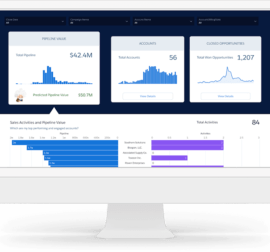 Contact us
Contact us Pardot Cookie News 2022
Most marketers are aware that in early 2022, Google will no longer support third-party cookies in Chrome browser. Google however updated the timeline of phasing out third-party cookies to mid-2023. The goal is to protect individuals from being tracked without their consent across the internet. Moving away from third-party cookies, on the other hand, is a challenge. Their primary value is in offering deep insights on user experiences across the web and in discovering new ways to use them. That’s why Salesforce Pardot created a first-party monitoring solution so that customers can continue to provide personalized experiences based on user journeys and serve relevant material at the correct moment.
![]()
Third-Party Cookie
A web cookie’s main function is to help the website keep track of subsequent visits and to retain information in a user’s browser that a website or online service can access. An online retailer, for example, may employ a cookie to identify a user so that the customer’s shopping cart can be maintained across visits to the site. Your shopping cart would reset to zero every time you clicked a new link on the site if you didn’t have cookies.
Third-party cookies are cookies that are stored under a different domain than you are currently visiting by a service provider. Here are a few of the main service providers that usually leave cookies in a user’s browser:
- Ad-Retargeting Services – Ad retargeting is the practice of tracking visitors to your website around the internet and giving them advertising for products or services they’ve previously viewed or interacted with.
- Social Buttons – Cookies are placed on your device by most social networking plugins that allow users to log in, share, and like the content on third-party websites. As a result, the social networking sites from which these cookies originate can track the websites you visit and serve you relevant adverts when you return to them.
- Live-Chat Popups – Live-chat popups work in a similar way as social buttons in terms of cookies. To improve the user experience, live-chat services will leave a cookie in your browser. Because the live-chat popup can recognize you, it will remember your name and the history of your conversations the next time you visit the chat window.
Why are third-party cookies going away?
Third-party cookies are frequently utilized to improve user experiences and target ads to the right audiences, but they also pose serious privacy concerns.
Major browsers (Safari, Firefox) already eliminated third-party cookies because of consumers‘ growing demand for privacy. Among other things, third-party cookies enable Cross-Site Request Forgery, which pushes users to perform undesired actions on online apps when they are currently logged in.
Engagement tracking in Pardot
Since the big shift in the industry happened, Pardot makes its first-party tracking feature announcement. However, switch to first-party tracking will have a few implications for Pardot engagement tracking.
The biggest one is that Pardot clients will no longer be able to track visitors between domains anonymously. This is true for everyone switching to first-party tracking, whether they’re using Pardot or another platform. This means that when a customer visits brand1.com, then brand2.com, Pardot will create two visitors. As a result, the customer will have to complete a form on both domains. Another big implication is that Pardot customers will need to align domains for all campaign assets to be able to properly track the user journey and maximize engagement data.
A typical campaign journey should include an ad, a landing page, a form, a whitepaper, and an email. In this case, the only way to maximize engagement data and follow the journey is to make sure that all of the links and assets are under the same root domain as the tracker domain. If your campaign’s website is domain1.com, the tracker domain’s root must be domain1.com as well. Otherwise, your activity data would be useless. Unless your campaign website and root tracker domain are the same, your activity data and insights will be incomplete.
In order to effectively migrate to first-party tracking alongside maintaining your current processes, it is recommended to:
- Examine your web properties to identify any tracker domains you might be missing for domain alignment, and make any necessary adjustments.
- Check websites you’re currently tracking to figure out where the Pardot tracking code needs to be replaced.
- Examine your Pardot-hosted content and make sure the domains are aligned. As soon as first-party tracking is enabled for Pardot-hosted content, it will be used.
First-party tracking domain configuration
The process of creating tracker domains hasn’t changed significantly. The key distinction is that you now must set a default campaign and the tracker code generator is now located on the Domain Management page, below “Tracker Domains” configurations. Once you choose the tracker domain, Pardot will generate a tracker code to place on the website. Important reminder-if you don’t choose a tracker domain that matches your website’s domain, your activity won’t be tracked.
Aida Khadzhibiekova, Salesforce Consultant


